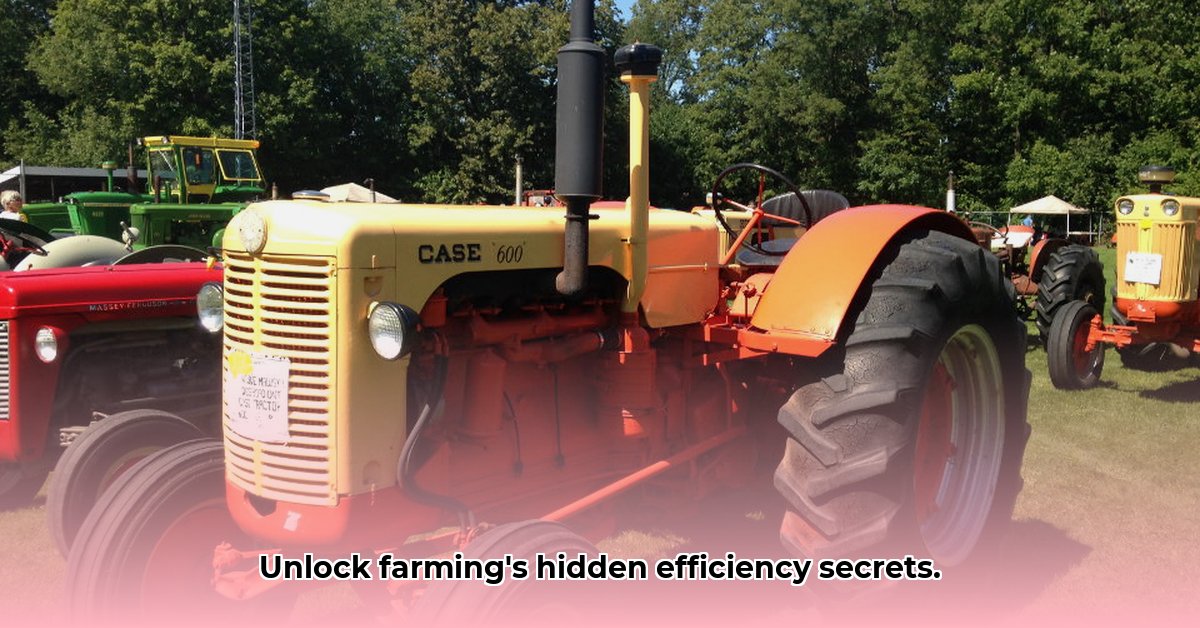
Case 600 Tractor: A Sustainable Farming Retrospective
The Case 600 tractor, a stalwart of its era, offers surprising insights into sustainable agriculture practices. Its robust design and straightforward mechanics stand in contrast to the complex technology of modern tractors, prompting us to question whether simplicity holds the key to environmentally friendly farming. This deep dive explores the Case 600's enduring relevance, examining its fuel efficiency, durability, and adaptability in the context of contemporary agricultural sustainability. For similar models, check out this Case 530 Tractor.
Simplicity's Surprisingly Sustainable Strength
The Case 600's strength lies in its straightforward design. Fewer components meant less potential for breakdowns, resulting in reduced downtime and lower repair costs. This translates to long-term cost savings, a significant benefit for any farm operation. This "less is more" philosophy challenges the modern agricultural paradigm, suggesting that streamlined designs might be more sustainable and economically viable in the long run. Is this simpler approach the future of sustainable farm equipment? It's a question worth considering. The versatility of the 611-B model further enhances this point; Its ability to adapt to various tasks using interchangeable attachments reduces the need for a fleet of specialized machines. This inherent adaptability echoes the efficiency and resourcefulness vital for sustainable farming.
Fuel Efficiency: A Vintage Tractor's Unexpected Savings
Directly comparing the fuel efficiency of a Case 600 to modern tractors isn't straightforward. However, for its time, the Case 600 was remarkably fuel-efficient. Its lower horsepower, while requiring longer working hours to achieve the same output, resulted in significantly lower fuel consumption per hour. This raises a crucial question: Does higher horsepower always equal greater efficiency? The answer is no. The Case 600 demonstrates that overall efficiency involves balancing power output with fuel consumption. Some Case 600 models also ran on liquid propane gas (LPG), showcasing the potential of alternative fuels in sustainable agriculture. Could this fuel diversification be a model for the future? The potential is certainly there.
Adaptability and Resource Optimization: The Case 600's Multitasking Prowess
The Case 600's adaptability stands as a testament to resourcefulness. Its ability to perform diverse tasks with interchangeable attachments reduces reliance on multiple specialized machines, minimizing both initial investment and ongoing maintenance costs. This approach directly aligns with the core principles of sustainable agriculture. What are the implications of this adaptability for modern farm equipment design? Implementing such multi-functional capabilities could significantly reduce the environmental impact of the agricultural sector.
The Case 600 in Today's Farming Landscape: Niche Applications and Sustainable Practices
While the Case 600's lower horsepower (around 70 hp) limits its applicability to large-scale farming, its characteristics prove valuable in other contexts. Small farms, specialized tasks, and farmers prioritizing low-impact practices find its modest power a significant advantage. This reduced power minimizes soil compaction, crucial for maintaining soil health – a cornerstone of sustainable agriculture. Professor Anya Sharma, Agricultural Engineering Department at Texas A&M, notes, "The reduced soil compaction resulting from lower horsepower tractors like the Case 600 offers significant benefits in long-term soil health and crop yields, ultimately aligning with the goals of sustainable agriculture."
Lessons from the Past: Shaping a Sustainable Farming Future
The Case 600's story highlights that sustainable farming requires a holistic approach. It's not just about advanced technology; it's about considering the entire lifecycle of farm equipment, from manufacturing to eventual disposal—"cradle-to-grave" assessment. This approach necessitates a shift from simply focusing on immediate productivity to encompassing long-term environmental responsibility. The Case 600's durability, fuel efficiency, and adaptability stand as powerful examples of responsible design.
Practical Steps for Sustainable Farming: A Three-Pronged Approach
Sustainable farming requires concerted efforts across various fronts:
Invest in Research & Development: Further research into the design philosophies of older tractors like the Case 600 can guide the development of more sustainable equipment. This includes exploring lightweight materials and innovative fuel sources.
Implement Supportive Policies & Incentives: Governments can promote sustainable agriculture through policies favoring fuel-efficient machinery and incentivizing environmentally conscious farming, potentially through tax breaks or subsidies.
Prioritize Farmer Education: Providing farmers with access to education and training on sustainable practices, including workshops, demonstration farms, or online resources, is crucial for fostering successful adoption.
The Case 600's legacy extends beyond its historical significance. It serves as a potent reminder that true agricultural efficiency isn't solely about horsepower; it's about durability, resourceful design, and a comprehensive understanding of environmental impact. This vintage tractor offers valuable lessons that continue to resonate deeply in the pursuit of sustainable farming practices.